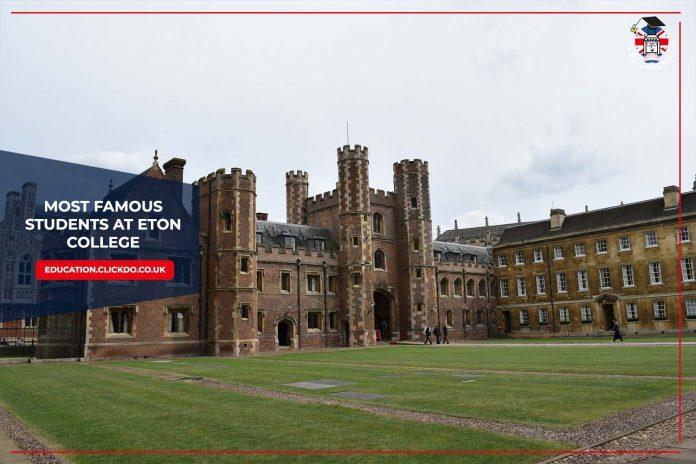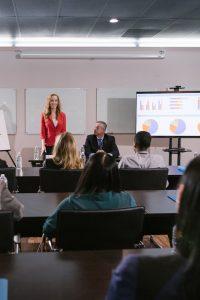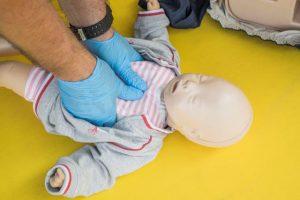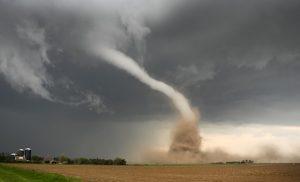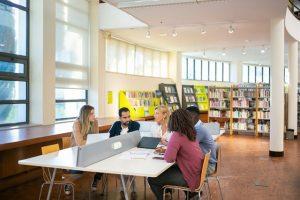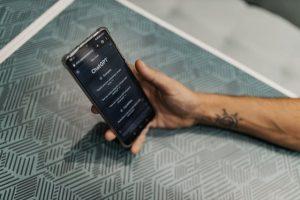Eton College is one of the most prestigious and exclusive private boarding schools in the United Kingdom.
And many are curious about who went to Eton College.
So, here we list the most famous students at Eton College UK to date and you may know one or two.
According to Eton School’s website, this boys-only high school is situated outside London, near Windsor, and is home to over 1000 male students.
According to Business Insider, it is “the nursery of England’s gentleman”.
Eton was founded by King Henry VI in 1440. Eton School conducts a two-step application process for which parents must register their son three years earlier at the age of 10 to start school at age 13.
Then the student must take a Common Entrance test or Eton Entrance examination at age 12 or 13 to get a confirmed place at Eton College UK.
They can also get into Eton by claiming the King’s Scholarship.
Here are some famous Etonians you may know and we share how they have risen to fame while being educated at the prestigious Eton Boarding School.
1. Eddie Redmayne
Edward John David Redmayne, an English actor, went to Eton College from 1995-2000, the same year as Prince William. They also played rugby in the same team and are still friends to this day.
Before going into acting, Redmayne modelled for a lot of magazines. After that, he moved on to the stage and small television projects.
However, in 2006, he was cast in his first feature film, and then the rest is history. His latest and most famous projects include the Fantastic Beasts series.
Did You Know? In 2014, Redmayne won the Academy Award, BAFTA, Golden Globe, and Screen Actors Guild Award for Best Actor for portraying Stephen Hawking in the movie The
Theory of Everything. He masterfully depicted the hard challenges of living with ALS in day-to-day life.
2. Tom Hiddleston
Thomas William Hiddleston is an English actor most famous for portraying the iconic anti-hero character Loki in the Marvel Cinematic Universe. He graduated from Eton College one year before Eddie Redmayne and Prince William.
Hiddleston started his acting career in his school days by participating in student plays and TV series. After graduating from the Royal Academy of Dramatic Art, he was cast in his first full-length film, Unrelated.
Did You Know? Hiddleston won a Golden Globe Award in 2017 for his role in the BBC’s adaptation of John le Carre’s novel about a hotel manager involved in arms smuggling. He has also received a Laurence Olivier Award, among many other accolades.
3. George Orwell
Eric Arthur Blair, known as George Orwell, was an English writer, journalist, and critic. Some of his famous works include novels like 1984 and short stories like Animal Farm.
Orwell studied at Eton until December 1921. He later described his Eton days as “interested and happy” to his childhood friend Jacintha Buddicom.
After graduating from Eton College, he took a police job in Burma, and that’s where his hate for a totalitarian society started taking root. He returned from Burma and became a full-time writer in 1928. He won the Prometheus Hall of Fame Award for his book 1984.
Did You Know? His style of writing, i.e., political dystopia, totalitarian and authoritarian settings, and culture, is known as “Orwellian“.
4. Ian Fleming
Ian Lancaster Fleming was a British writer and journalist best known for his James Bond series of spy novels.
He attended Eton College in 1921 and was the editor of the school magazine, The Wyvern. During the Second World War, he was recruited by Rear Admiral John Godfrey, Director of Naval Intelligence of the Royal Navy, to become his assistant.
It was in this job that he finally found his passion and creativity. After the war in 1952, he started writing Casino Royale, and the rest is history almost on a whim.
Did You Know? Ian Fleming wasn’t a high achiever academically, but he excelled in athletics at Eton College and held the title of Victor Ludorum (“Winner of the Games”) for two years between 1925 and 1927.
5. David Cameron
David William Donald Cameron was the 54th Prime Minister of the United Kingdom from 2010 to 2016.
He attended Eton College from 1979 to 1984. After graduation, Cameron went into politics and worked for the Conservative Research Department. He was elected to parliament to serve as a Commons Home Affairs Select Committee member in 2001.
Cameron announced on 29 September 2005 that he would be a candidate for the Conservative Party. He became the Prime Minister of the United Kingdom following the resignation of Gordon Brown on 11 May 2010.
Did You Know? Eton has educated over 20 prime ministers out of 55 total prime ministers in the United Kingdom in its history.
6. Boris Johnson
Alexander Boris de Pfeffel Johnson is the fifth Eton-educated Prime Minister since World War II.
He won the King’s Scholarship to study at Eton College in 1977. In school, Johnson excelled in English and the Classics, winning prizes in both. He was the editor of the school newspaper, The Eton College Chronicle, and the secretary of the school debating society.
After graduating from Eton, he went on to study classics at Balliol College. He was elected President of the Oxford Union in 1986.
After that, he began his career in journalism. He worked at both The Times and The Daily
Telegraph. He started building his foot and fan-following through his writings.
On 24 July 2019, Queen Elizabeth II accepted Theresa May’s resignation and accepted Johnson’s nomination as prime minister after winning the general election as a Conservative Party leader.
Did You Know? Johnson’s biographer Andrew Gimson said that “these articles made him one of [Euroscepticism’s] most famous exponents”.
7. Prince William, Duke of Cambridge
William Arthur Philip Louis, Duke of Cambridge, is the elder son of Charles, Prince of Wales, and Diana, Princess of Wales, and a senior member of the British Royal Family. Prince William attended the college in 1995 becoming the first senior member of the royal family to be educated there. His main subject studies included geography, biology, and the history of art.
As part of his royal duties, he oversees more than 30 charitable organisations, like the African Wildlife Foundation, BeatBullying, the British Academy of Film and Television Arts, Centrepoint, Children In Crisis, Diana Awards, etc.
In 2016, along with Prince Harry, he initiated a mental health awareness campaign, “Heads
Together” to encourage everyone to talk about their mental health issues.
Prince William got married to Catherine Middleton, the Duchess of Cambridge, in 2011 and was made Duke of Cambridge preceding his marriage to the Duchess. The couple has three children named George, Charlotte, and Louis.
Did You Know? Eton College is well-known for educating both English royalty and foreign royals from countries like Nepal, Belgium, Romania, Thailand, and Ethiopia.
8. Prince Harry, Duke of Sussex
Henry Charles Albert David, Duke of Sussex, is the younger son of Charles, Prince of Wales,
and Diana, Princess of Wales. He went to Eton College in 1997, following in his older brother’s footsteps.
After graduating, he went into the Royal Military Academy Sandhurst on 8 May 2005. He got married to Meghan Markel, an American actress, on 19 May 2018. In 2020, the couple announced that they would step back from all their senior royal duties.
Did You Know? Prince Harry was a part of the Combined Cadet Force while studying at Eton. In his last school year, he was appointed as a cadet officer and led the corps’ annual parade at the Eton Tattoo.
9. John Gurdon, biologist and Nobel laureate
Sir John Bertrand Gurdon is a British developmental biologist. He was awarded the Nobel Prize in 2012 in the Physiology or Medicine section for discovering the potentiality of mature cells turning into stem cells. His Nobel Lecture was called “The Egg and the Nucleus: A Battle for Supremacy”.
Did You Know? The Nobel Prize-winning biologist ranked last out of the 250 boys in his class in biology. He was also doing poorly in every other science subject at Eton. Finally, one of his schoolmasters wrote a report stating, “I believe he has ideas about becoming a scientist; on his present showing, this is quite ridiculous.”
10. John William Strutt, physicist
John William Strutt, 3rd Baron Rayleigh, was a British physicist in the 1900s. His most notable works include fluid dynamics, optics, aerodynamic theories, and radiation, which later played an important role in forming quantum mechanics.
He won the Nobel Prize in Physics in 1904 “for his investigations of the densities of the most important gases and his discovery of argon in connection with these studies.”
Did You Know? “Rayleigh scattering“, which is named after him, is a phenomenon that describes the elastic scattering of light by particles much smaller than the light’s wavelength, which explains why the colour of the sky is blue.
11. Bear Grylls
The famous adventurer and explorer of our time, Edward Michael “Bear” Grylls, also went to Eton College. After graduating from school, he went into military service, but his army days were cut short due to a parachute-malfunctioning accident. But, being a true Etonian, he never gave up.
He fulfilled his dream of climbing to the summit of Mount Everest only 18 months after the accident, at the age of 23.
Bear Grylls was the host of a very popular survivalist show called Man vs. Wild in 2006. The tremendous success of the show led it to last over five years and seven seasons.
Did You Know? Bear Grylls helped start Eton’s first mountaineering club while studying there.
12. Percy Bysshe Shelley
Percy Bysshe Shelley, a major figure of the Romantic movement, attended Eton College before studying at Oxford. Known for his radical ideas on politics and religion, Shelley produced some of the most enduring poetry in English literature, including works like Ozymandias and Prometheus Unbound.
Despite his controversial ideas, Shelley’s poetry and political essays continue to influence thinkers, poets, and activists.
Did You Know? In his final term at Eton, Shelley published his first novel, Zastrozzi, and gained a group of followers among his classmates. Before starting at University College, Oxford, in October 1810, he completed several works: Original Poetry by Victor and Cazire (written with his sister Elizabeth), the verse drama The Wandering Jew, and the gothic novel St. Irvine; or, The Rosicrucian: A Romance, which was published in 1811.
13. Aldous Huxley (Author of Brave New World)
Aldous Huxley, best known for his dystopian novel Brave New World (1932), attended Eton before going to Oxford.
Huxley was a prolific writer and intellectual, exploring topics such as human potential, philosophy, and spirituality.
Huxley’s Brave New World remains one of the most influential works of dystopian literature, critiquing societal reliance on technology and loss of individuality.
His non-fiction works, such as The Doors of Perception, also explored human consciousness and altered states of awareness.
Did You Know? Aldous Huxley temporarily lost most of his vision in his teens due to an illness and spent much of his later life nearly blind. This condition limited his options at Eton, so instead of pursuing science, he focused on literature, which ultimately shaped his career as a writer.
14. Harold Macmillan
Harold Macmillan, an Eton-educated politician, led the UK as Prime Minister during a critical period (from 1957 to 1963) in post-World War II recovery.
Known for his moderate conservatism, Macmillan presided over a period of economic growth and social reform, earning the nickname “Supermac” for his calm, reassuring leadership.
Macmillan is remembered for his famous “Wind of Change” speech in 1960, in which he acknowledged the growing movement toward decolonisation in Africa. His policies helped reshape the British Empire during the global wave of independence movements.
Did You Know? Harold Macmillan was seriously wounded during World War I, being shot multiple times in the pelvis, leg, and arm. He spent 12 hours in a shell hole, reading Aeschylus in the original Greek to keep himself calm while awaiting rescue. His war experiences greatly influenced his leadership and worldview.
15. John Maynard Keynes
John Maynard Keynes, one of the most influential economists of the 20th century, attended Eton before studying at Cambridge. He revolutionised economic thought with his theories on government intervention and deficit spending, particularly in times of economic downturn. Keynes’ ideas laid the foundation for modern macroeconomics.
Keynes’ work, particularly The General Theory of Employment, Interest, and Money, published in early 1936, shaped global economic policies, especially during the Great Depression and the post-World War II period. His influence can still be seen in contemporary economic policy and debate.
Did You Know? John Maynard Keynes was an avid art collector and served as a trustee of the National Gallery and the Royal Opera House. His extensive collection included works by Picasso, Braque, and Seurat, which he purchased with earnings from his stock market investments—a side of his financial genius rarely highlighted.
16. Anthony Eden
Anthony Eden, educated at Eton and Oxford, was a diplomat and Prime Minister during the height of the Cold War (from 1955 until his resignation in 1957).
His tenure as PM was marked by the controversial Suez Crisis of 1956, which damaged Britain’s standing on the world stage. Though his premiership was brief, Eden had a long and distinguished career in foreign policy.
Before becoming Prime Minister, Eden served as Foreign Secretary and was instrumental in shaping Britain’s post-war foreign policy. Despite the difficulties of the Suez Crisis, his leadership in earlier diplomatic efforts helped maintain Britain’s influence during the early Cold War period.
Did You Know? Anthony Eden was a highly decorated soldier during World War I, earning the Military Cross for bravery. Despite his successful military career, his legacy as Prime Minister was marred by the Suez Crisis, which forced him to resign due to political and health pressures.
17. Earl Mountbatten of Burma
Louis Mountbatten, 1st Earl Mountbatten of Burma, was a British naval officer, statesman, and a key figure in the British Royal Family. As the last Viceroy of India, he oversaw the transition of British India to independence, playing a crucial role in the partition of India and Pakistan.
Mountbatten was a highly decorated naval commander during World War II and was deeply involved in Britain’s post-war geopolitical affairs. His assassination by the IRA in 1979 shocked the nation and underscored the complexity of his legacy.
Did You Know? Earl Mountbatten was a mentor to Prince Charles and played a significant role in his upbringing. Prince Charles described Mountbatten as the “grandfather I never had,” and Mountbatten’s assassination by the IRA in 1979 had a profound impact on the royal family.
18. George Canning
George Canning, one of the shortest-serving British Prime Ministers, was an Eton alumni who played a significant role in early 19th-century British politics.
Canning was known for his liberal reforms, particularly his support for the abolition of slavery and for Catholic emancipation.
Although his time as Prime Minister lasted only 119 days, from April to August 1827. Canning’s influence as a foreign secretary was pivotal.
He strengthened British foreign policy and diplomacy, helping to define Britain’s international role during a time of great political transformation in Europe.
Did You Know? George Canning was involved in a duel in 1809 with a fellow politician, Lord Castlereagh, over disagreements in government. Although neither was seriously injured, it was a rare event in British political history and highlighted the intense personal and political rivalries of the time.
Here are more interesting facts about Eton College:
1. Oldest Boarding School in England
Eton College was founded in 1440 by King Henry VI. Originally intended to provide free education to 70 poor boys, it has evolved into one of the most prestigious schools in the world. It has maintained many of its traditions for over 580 years.
2. The Eton Wall Game
Eton has a unique and historic sport called the Eton Wall Game, which has been played annually since at least 1766. The game is played on a narrow strip of ground next to a brick wall, and despite its long history, goals are rarely scored. The last recorded goal in the traditional St. Andrew’s Day match between Collegers and Oppidans was in 1909.
3. Educating Royalty
Eton College has educated numerous members of the British Royal Family, including Prince William and Prince Harry. The college has a special link with royalty, having been founded by a king, and continues to play a key role in educating future leaders.
4. Largest Private School Chapel
The Eton College Chapel is one of the largest private school chapels in the world. Originally planned to be even larger, its construction was halted by the Wars of the Roses. The chapel contains some of the finest examples of mediaeval architecture in England.
5. Unique School Uniform
Eton is famous for its distinctive school uniform. Boys wear a black tailcoat, waistcoat, and pinstriped trousers, along with a white shirt and black tie. This formal uniform, known as the “Eton Dress,” is still worn by students today, especially for special occasions.
6. Impressive Alumni Network
Eton’s alumni network, called Old Etonians, is one of the most influential in the world. The network spans politics, literature, science, arts, and business. Etonians have often been described as forming a “ruling class,” with 20 British Prime Ministers, including David Cameron and Boris Johnson, both of whom attended the school.
7. Notable Wartime Role
During World War II, Eton College played an active role in Britain’s war effort. The school housed evacuated pupils from other schools and helped train officers for the British Army. Some of its buildings were used by the military, and several former pupils fought in the war, with many losing their lives.
8. Free Places for Talented Students
Although Eton is known for its high fees, it also offers scholarships and bursaries to talented students from less privileged backgrounds. Around 20% of students receive financial assistance, and the school aims to further increase accessibility to deserving candidates.
9. Extensive Archives
Eton College has one of the most extensive and important historical archives among schools in the UK. The archives contain rare manuscripts, historic documents, and letters, some of which date back to the school’s founding. They provide insight into centuries of British history.
10. Influence on Literature and Culture
Eton has had a profound influence on English literature and culture. Many famous writers, including George Orwell, Ian Fleming (creator of James Bond), and George MacDonald Fraser, attended Eton. The school’s culture of debate, inquiry, and learning fostered their creative talents, helping shape their careers as iconic authors.
These fascinating aspects of Eton College showcase its rich heritage, unique traditions, and enduring influence on both British and global history.
Eton’s Role in Shaping Global Leadership and Culture:
1. Global Influence:
Eton’s alumni network extends far beyond the UK. Several of its former students have gone on to play crucial roles in global politics, including leaders of Commonwealth countries and notable diplomats.
2. Academic Prowess:
Eton consistently ranks as one of the top schools in the UK for academic achievement. The school offers a rich curriculum that emphasises critical thinking, intellectual curiosity, and a deep engagement with both the arts and sciences.
3. Sports and Extracurricular Excellence:
The school is renowned for its emphasis on extracurricular activities, especially sports like rowing, cricket, and rugby. The Eton Wall Game, a unique and physically demanding sport, originated at the school and is still played today.
4. Endowment and Wealth:
Eton has one of the largest school endowments in the world, valued at over £400 million. This financial power enables the school to maintain state-of-the-art facilities, offer scholarships to talented students, and fund a wide array of academic and extracurricular programs.
5. Tradition of Philanthropy:
Many of Eton’s alumni have gone on to become significant philanthropists, contributing to the arts, education, and humanitarian causes worldwide. Notable Etonians have supported initiatives in fields as diverse as global health, climate change, and education reform.
Eton College remains one of the most iconic educational institutions in the world, not only for its academic achievements but also for its unparalleled influence on global leadership and culture. Its long-standing traditions, extensive alumni network, and commitment to developing future leaders ensure that it will continue to play a significant role in shaping history for generations to come.
Now you know who went to Eton College & there are more
Some other exceptionally popular Old Etonians are actors Hugh Laurie, Britain’s very first Prime Minister, Robert Walpole, journalists like the former editor of The Daily Telegraph, Charles Moore, and BBC journalist, David Shukman amongst many others.
Eton Boarding School has also educated various foreign royalty like Crown Prince Zera Yacob Amha Selassie of Ethiopia, King Dipendra of Nepal.
Eton College UK is one of the most prestigious colleges in the United Kingdom as you can see from this list of Eton College alumni. It accepts students from various backgrounds and countries like the USA, Europe, and Asia.
The ISI Educational Quality Report in 2021 reports the school’s performance regarding teaching, student development, health, and hygiene to be above average in their inspection. The school has recently built two new boarding houses, new sports facilities, and a new Science school to keep up with their incoming new generations of talented students.
These 18 famous alumni are merely the surface molecules in the froth above a bubbling broth, and we are certain that there will be more Eton students to come who will make the world smile, smirk, wonder, cringe, and envy. However, it may be of benefit to include females for even more diversity.
So, if you’re a girl or don’t have a few spare thousand in your pocket to pay for private elite education then you can learn lucrative skills via top eLearning platforms and become a famous and wealthy influencer in the UK these days.
If you want us to add a suggestion here based on your experience, please get in touch with us!


